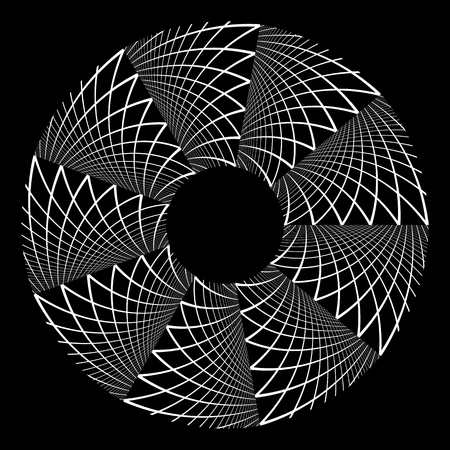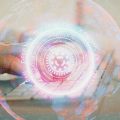Introduction: Auras in British Culture
The concept of auras—subtle fields of energy said to surround living beings—has long held a curious place within the tapestry of British culture. From the misty folklore of Celtic traditions to the emergence of Victorian spiritualism, the idea that people and places might radiate invisible forces has persisted, shaping both popular imagination and more niche practices. In rural England and Scotland, tales of “second sight” and spiritual sensitivity have been passed down through generations, blending seamlessly with local legends of faeries and spirits. During the nineteenth century, Britain became a crucible for new spiritual movements, such as Theosophy and Spiritualism, where parlour séances and aura photography captivated both sceptics and believers. Today, interest in aura reading continues to evolve, finding fresh expression among holistic therapists, mindfulness practitioners, and even artists who seek to visualise human energy in contemporary forms. This ongoing fascination reflects not only a deep-rooted respect for mystery but also a willingness to bridge tradition with modern scientific inquiry—a uniquely British approach that keeps the dialogue around auras vibrant and ever-changing.
2. The Scientific Approach to Aura Reading
In recent years, the scientific community in the UK has taken a renewed interest in investigating the phenomenon of aura reading. While traditionally regarded as a mystical or spiritual practice, modern researchers are now examining it through the lens of empirical science. Central to this investigation is the concept of the human biofield—a term encompassing the subtle electromagnetic fields that purportedly surround living beings. British universities and independent laboratories have initiated studies aiming to measure and interpret these fields, with mixed results.
Scepticism remains strong within mainstream science circles. Many UK academics argue that current evidence for auras and energy fields is anecdotal or lacks rigorous methodological control. However, proponents point to emerging technologies such as bioelectrography (GDV/Kirlian photography) and highly sensitive electromagnetic sensors as promising tools for exploring the reality behind aura perceptions. These devices attempt to detect minute changes in electrical conductivity or radiation around the body, potentially correlating with mood or health status.
Current Scientific Research Landscape in the UK
| Institution/Group | Research Focus | Status/Findings |
|---|---|---|
| University College London (UCL) | Biofield imaging and psychological correlation | Early-stage; preliminary data suggests weak but present correlations between mood and field patterns |
| British Society for Psychical Research | Anecdotal reports & controlled experiments on energy sensitivity | Mixed; some participants report perceivable changes, but reproducibility remains an issue |
| Private Technology Start-ups | Development of consumer-grade aura sensing devices | Commercially available, but scientific validation ongoing |
Scepticism Versus Open-Minded Inquiry
The debate over aura reading in the UK reflects broader cultural attitudes towards alternative therapies and scientific investigation. On one hand, there is a distinctly British scepticism—rooted in empiricism—that demands robust evidence before accepting extraordinary claims. On the other hand, a growing segment of researchers and practitioners advocate for an open-minded approach, suggesting that dismissing phenomena simply because they defy current models may hinder genuine discovery.
The Role of Emerging Technologies
The integration of new measurement tools into research protocols marks a significant step forward. Devices capable of detecting microvolt-level fluctuations or visualising thermal and electromagnetic emissions are being trialled in both clinical and experimental settings across the UK. Although these technologies are not without controversy—often criticised for their lack of standardisation—they represent a bridge between traditional practices and scientific method.
In summary, while consensus remains elusive, the UK’s blend of cautious inquiry and technological innovation continues to shape an evolving dialogue about the science underlying aura reading. This dynamic landscape illustrates how tradition and modernity are being bridged by those willing to rigorously examine unconventional ideas.

3. Mystical Traditions and Modern Practices
Tracing the roots of aura reading in the UK leads us deep into a tapestry woven from centuries of mystical and esoteric traditions. From the medieval alchemists seeking the philosopher’s stone to the Victorian fascination with Spiritualism, British culture has long held a curiosity for unseen realms. Ancient Druidic practices, Celtic folklore, and later, Theosophical societies all contributed layers to the evolving understanding of subtle energies and human auras.
Today, these traditions have not been consigned to history. Rather, they are actively interpreted and preserved by modern practitioners across Britain. Spiritualist churches still operate in towns large and small, offering readings and healing sessions that blend inherited ritual with contemporary sensibilities. Esoteric groups gather in community centres or online forums to exchange insights on energy work, meditation, and psychic development, often referencing both classical texts and current scientific perspectives.
Modern British aura readers frequently describe their approach as a bridge between past wisdom and present discovery. Some integrate traditional elements—such as colour symbolism rooted in folklore—while others incorporate biofeedback devices or psychological frameworks. There is an ongoing dialogue within these communities: how to honour the integrity of old ways while remaining open to innovation and inclusivity. This blend of reverence for tradition with an appetite for experimentation characterises much of the UKs aura reading scene today.
4. Aura Reading in Everyday Life: UK Perspectives
The integration of aura reading into everyday life in the UK is a fascinating blend of curiosity, scepticism, and subtle acceptance. Through interviews and stories collected from diverse communities across England, Scotland, Wales, and Northern Ireland, it becomes apparent that British attitudes towards aura reading are both nuanced and practical.
Everyday Encounters with Aura Reading
Many Britons encounter aura reading at local holistic fairs, spiritualist churches, or even informal gatherings in pubs and community centres. While some treat it as a light-hearted pastime, others turn to aura readers for personal insight during times of uncertainty. For instance, Sarah from Manchester shares, “I went to an aura reader at a street market out of curiosity, but her comments about my stress levels actually prompted me to reconsider my work-life balance.” Such stories highlight how aura reading can act as a gentle catalyst for self-reflection.
Mainstream Acceptance and Scepticism
Attitudes towards aura reading are shaped by the UK’s long-standing tradition of scientific inquiry alongside a cultural fondness for eccentricity. According to a recent survey conducted by the British Holistic Association:
| Demographic | View on Aura Reading | Practical Application |
|---|---|---|
| Youth (18-25) | Open-minded, experimental | Mental health awareness, mindfulness practices |
| Middle-aged (26-55) | Cautiously curious | Stress management, self-development tools |
| Seniors (56+) | Sceptical but respectful | Community engagement, social connection |
This diversity reflects the British ability to entertain new ideas while maintaining a healthy dose of scepticism. As Dr. Helen Price, a sociologist at the University of Bristol notes, “Aura reading often sits comfortably next to other alternative therapies—neither fully embraced nor dismissed outright by most people.”
Practical Applications in British Society
Aura reading finds its way into several practical aspects of daily life. Practitioners have been invited into workplaces to lead mindfulness workshops; some schools offer extracurricular clubs exploring energy fields as part of their well-being curriculum. Even within the NHS, complementary therapy units occasionally reference energy healing concepts as supportive care for patients seeking holistic approaches.
Stories from the Field: Bridging Tradition and Modernity
Interviews reveal that individuals who engage with aura reading often seek a sense of connection—whether with themselves or others. Tom, a retired engineer from Glasgow, remarks: “I don’t believe in it literally, but I see value in any practice that gets people talking about their feelings.” This pragmatic attitude is echoed throughout the UK and illustrates how aura reading bridges tradition and modernity—not by demanding belief but by providing space for reflection within contemporary British culture.
5. Bridging the Gap: Dialogue Between Science and Spirituality
The ongoing conversation between science and spirituality in the UK has become increasingly vibrant, particularly when it comes to practices such as aura reading. Historically, British society has been characterised by a pragmatic approach to mystical traditions, often viewing them through a lens of scepticism. However, recent years have seen a noticeable shift towards open dialogue and collaboration. Across the country, universities and spiritual communities alike are engaging in joint research projects and public forums that explore the intersections between empirical evidence and centuries-old intuitive practices.
Collaborative Efforts in Research
In cities like London, Manchester, and Edinburgh, interdisciplinary initiatives are taking shape. For example, certain psychology departments have partnered with local energy healers to conduct qualitative studies on personal experiences of aura perception. While mainstream scientists may remain cautious, there is a growing willingness to document anecdotal evidence and examine whether these perceptions can be correlated with measurable physiological or psychological changes. These collaborations are supported by UK-based organisations such as The Scientific and Medical Network, which hosts regular seminars addressing consciousness studies and holistic approaches to health.
Debates at Academic and Grassroots Levels
The debate surrounding aura reading is not confined to academic circles. Community centres and independent bookshops across the UK frequently host panel discussions where sceptics and practitioners engage in thoughtful exchange. This dialogue often highlights the cultural significance of traditional beliefs while encouraging critical analysis. Notably, events such as the Mind Body Spirit Festival in London provide a platform for both scientific presenters and spiritual practitioners to share their perspectives, fostering mutual respect and understanding.
Events Aimed at Integration
Perhaps most significant are the events specifically designed to bridge tradition with modernity. Workshops titled “Science Meets Spirit” or “The Physics of Mysticism,” held in venues from Brighton’s seafront halls to community spaces in Glasgow, invite participants to examine aura reading through both scientific inquiry and experiential learning. These gatherings encourage attendees to question assumptions while remaining open-minded—reflecting a particularly British blend of reasoned debate and respectful curiosity. In sum, the UKs efforts to reconcile empirical enquiry with longstanding mystical traditions exemplify a unique national approach: one that values evidence but also honours the enduring allure of mystery.
6. Contemporary Challenges and Ethical Considerations
The practice of aura reading in the UK, while steeped in a rich blend of tradition and modern reinterpretation, faces several contemporary challenges that warrant careful ethical consideration. As the popularity of alternative spiritual practices continues to grow, so too does public scrutiny regarding their legitimacy and impact on society. A key issue lies in the responsibility practitioners have towards those who seek their services, particularly when vulnerable individuals may be involved.
Addressing Ethical Concerns
With the rise of commercial aura readings—whether in holistic fairs across London or online consultations from Cornwall to Glasgow—there is an increasing need for transparency and honesty. Ethical practitioners are expected to clarify that aura reading, while meaningful to many, is not a substitute for medical advice or psychological counselling. Misleading claims or overpromising results can erode trust and potentially cause harm, making it essential for those within the British aura reading community to self-regulate and adhere to clear codes of conduct.
The Role of Critical Thinking
In a society where scepticism is both valued and encouraged, critical thinking plays an important role in how Britons engage with mystical practices such as aura reading. The British penchant for rational enquiry means that claims surrounding aura interpretation are often met with healthy debate and demand for evidence. This environment encourages both practitioners and clients to question assumptions, seek corroborating information, and reflect on personal experiences without dismissing them outright. Such dialogue fosters a more informed and balanced approach to spiritual exploration.
The Influence of Media and Commercialism
Media portrayals of aura reading—from sensationalist tabloid stories to well-produced documentaries—significantly shape public perception in the UK. While media coverage can help destigmatise alternative spirituality, it also risks trivialising or commodifying deeply personal experiences. The commercialisation of aura-related services further complicates matters, with workshops, merchandise, and celebrity endorsements sometimes overshadowing genuine practice. This intersection between commerce and mysticism challenges both providers and seekers to distinguish between authentic engagement and profit-driven exploitation.
British Context: Navigating Tradition and Modernity
Ultimately, the future of aura reading in the UK hinges on balancing respect for longstanding traditions with an openness to critique and innovation. Practitioners must navigate a landscape where historical reverence meets modern scepticism, ensuring their work contributes positively within communities rather than exploiting belief. By fostering open communication, prioritising ethical standards, and embracing critical thinking, the British aura reading community can continue its evolution as a meaningful—yet responsibly practised—part of the nation’s cultural tapestry.
7. Conclusion: The Future of Aura Reading in the UK
As we reflect on the journey of aura reading within the United Kingdom, it becomes apparent that both science and mysticism have continued to shape its evolution. Today, Britain finds itself at a crossroads—where heritage practices meet modern curiosity and technological advancement. This unique position allows for a blending of old-world wisdom with contemporary perspectives, resulting in a landscape where aura reading can thrive as both an art and a potential science.
The growing interest in holistic wellbeing and alternative therapies has helped aura reading to find renewed relevance, particularly among younger generations seeking meaning beyond material explanations. Simultaneously, British scepticism—rooted in a strong tradition of scientific inquiry—encourages practitioners to explore empirical methods, such as biofeedback devices or digital imaging techniques, in an effort to validate traditional practices. This dialogue between belief and evidence fosters a culture of respectful experimentation rather than outright dismissal or blind acceptance.
Looking ahead, the future of aura reading in the UK appears to be one of integration rather than isolation. As multiculturalism continues to shape British identity, influences from Eastern philosophies, Western esotericism, and indigenous traditions intermingle, enriching local approaches to energy work and personal development. Community-based workshops, academic research projects, and collaborative events are increasingly common, signalling a willingness to bridge gaps between disparate worldviews.
Yet, challenges remain. Misconceptions about aura reading still persist, sometimes fuelled by sensationalist media or fraudulent claims. Ensuring ethical practice and clear communication will be crucial for maintaining credibility and fostering genuine interest. Education—both formal and informal—has a vital role to play in contextualising aura reading within broader discussions about mental health, spirituality, and scientific exploration.
In summary, the evolving landscape of aura reading in the UK is marked by open-mindedness tempered with discernment. Whether viewed through the lens of cultural tradition or emerging science, aura reading continues to adapt—reflecting Britain’s broader capacity for innovation while honouring its rich spiritual heritage. As societal attitudes shift and new technologies emerge, one can expect this practice to further develop as an accessible tool for self-reflection and community connection within Britain’s ever-changing cultural mosaic.


